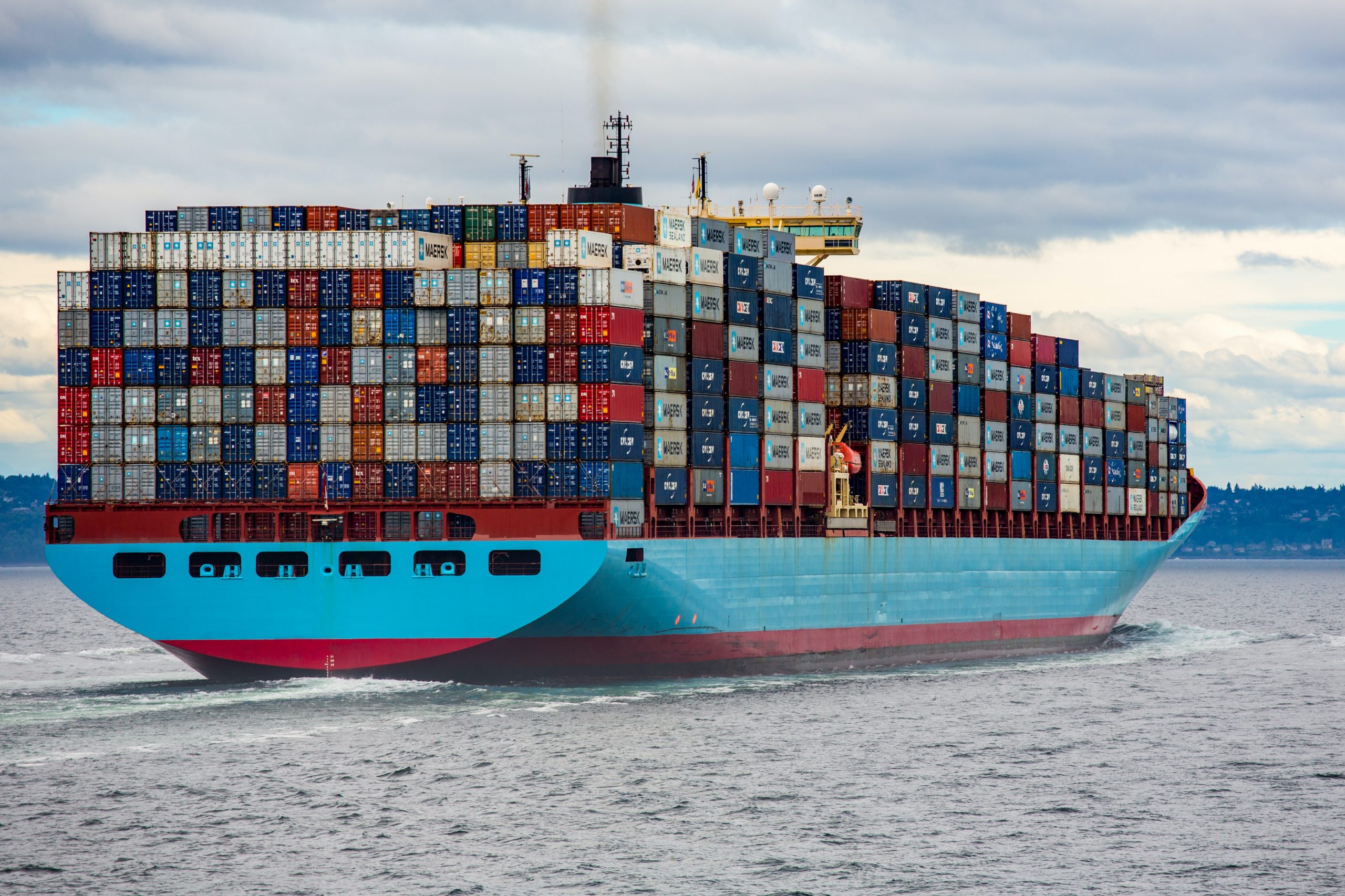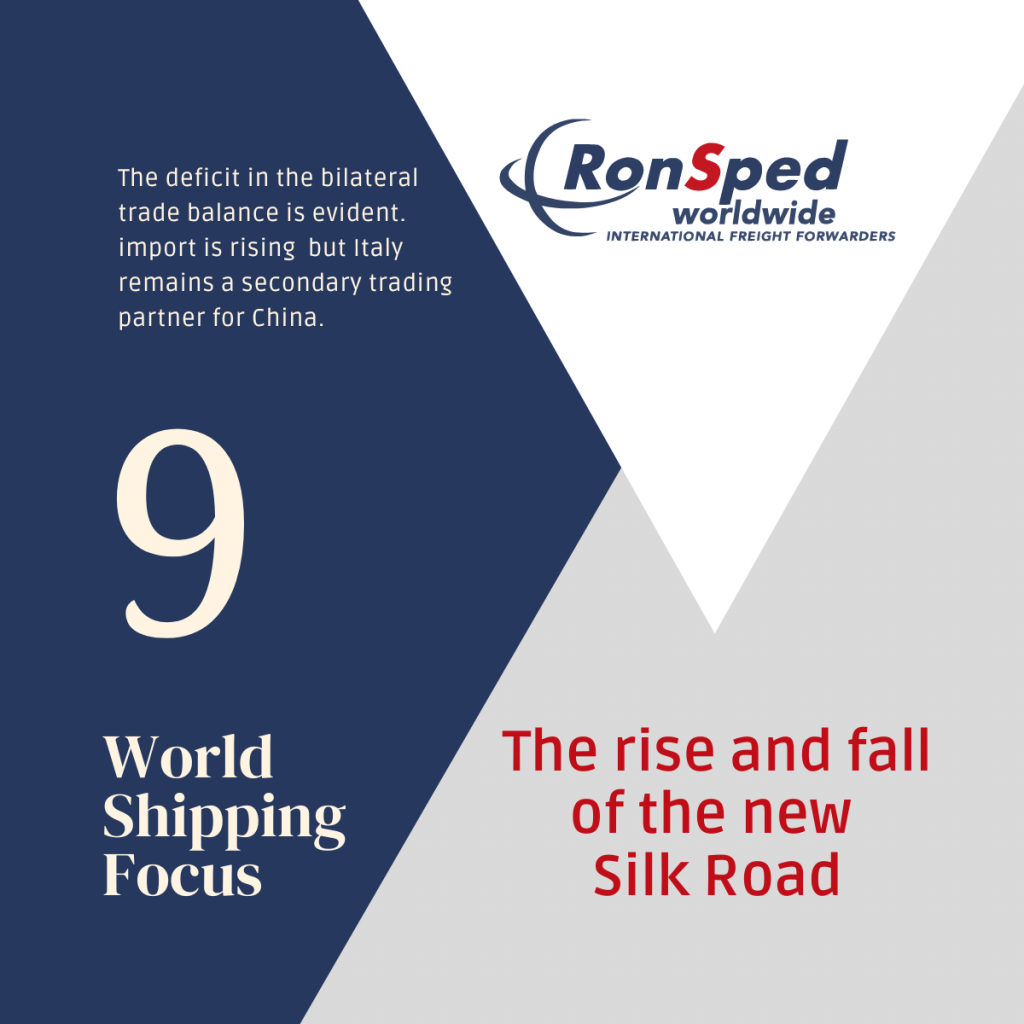
The New Wave of Container Ships: Bigger and More Sustainable?
5 Giugno 2023
Revolutionizing Storage and Logistics: VLMs and VSWs
20 Giugno 2023In 2017, the Belt and Road Initiative shook the logistics and transportation sector. The initiative, launched by China, promised to radically change the settings of port facilities and routes to and from the Far East, with a program that impacted the entire Mediterranean region, particularly countries such as Greece, Israel, Turkey, and Italy.
The doubling of the Suez Canal and Chinese investments along the Silk Road, totaling $1.4 trillion, seemed to open up prospects for further strengthening the role of the Mediterranean and its ports, which were expected to receive significant investments for the loading and unloading of the so-called “silk ships.” Over time, investments along this route have continued, with the opening of combined train-ship connections.

The Italy-China Memorandum of Understanding on the Economic and Maritime Silk Road
In 2019, Italy and China, under the Conte government, signed a memorandum of understanding on cooperation in the “Belt and Road Initiative” and the “21st Century Maritime Silk Road”. The two nations commit, within the framework of the Belt and Road Initiative, to translate their respective complementary strengths into mutual advantages for concrete collaboration and sustainable growth. The objective is to support synergies between the Belt and Road Initiative and the priorities identified in the European Investment Plan and Trans-European Transport Networks, taking into account ongoing discussions within the “EU-China Connectivity Platform.” In this way, Italy and China also intend to strengthen political relations, economic ties, and direct exchanges between the two peoples.
A new combined train-sea transport route on the Silk Road
In 2022, another step towards creating more efficient connections is the route launched from Xi’an (the capital of Shaanxi in northwest China), which covers countries and regions that have rarely seen China-Europe freight train services in the past, opening up new markets for national and international businesses. The first train on this route departed in April, carrying sporting equipment, clothing, and bedding, passing through Kazakhstan, Azerbaijan, Romania, Hungary, Slovakia, and the Czech Republic, before reaching Mannheim in Germany, covering a total distance of 11,300 kilometers. The new rail service confirms the southward shift of railway corridors along the Belt and Road due to the war in Ukraine. If the hypothesis of passage through Turkey were to materialize, it could have significant repercussions on the port of Trieste.
The current situation of the Silk Road
Unfortunately, the predictions have not materialized. Except for chemicals and pharmaceuticals, the volume of goods transported on the New Silk Road via Russia continues to decline. Although the transit times are becoming interesting for customers and no accidents have been reported, which reassured customers and insurers, in April there were 18,498 TEUs transported by rail between Europe and China, marking a decline of nearly 34% compared to April of the previous year. Despite the impact of the war becoming evident in April 2022, the Russian route still saw the transportation of 27,934 TEUs. In March of this year, the volume reached 21,034 TEUs.
According to the ERAI index, during the first quarter of this year, a total of 59,956 TEUs were transported along the route, representing a decrease of almost 54% compared to the first quarter of 2022. The lowest volume was recorded in February of this year, with over 17,586 TEUs transported.
The situation in Italy
In 2022, mainly due to the war in Ukraine, freight train traffic between China and Europe experienced a sharp decline, which became a collapse in the case of Italy. The volume of transport in Italy decreased by 91.62% compared to 2021, despite the new Wuhan-Milan route. The only positive data is from Hungary, which, as a secondary player, made a significant leap with a 1,266% increase in cargo volume.
The decline in transportation demand is the main cause of the progressive decline in maritime freight rates for container shipments, which last week saw Drewry’s World Container Index drop below the $2,000 threshold for the first time in years, confirming the bearish trend for sea freight prices. The decrease in February was 2%, while compared to the same week in 2022, it was a significant 79% decrease, reaching $1,954.64 for a 40-foot container. Compared to the peak recorded in September 2021 ($10,377), the current level of rates is 81% lower, and it is also 27% lower than the average of the last decade ($2,693). If compared to the numbers from 2019 before the pandemic ($1,420), current rates are still higher by 38%.
Government actions for the renewal of Italy-China agreements on the Silk Road
The Meloni government seems determined not to renew the memorandum of understanding signed in March 2019.
Ambassador Jia Guide hopes for a revival of the memorandum and recently stated that China has no intention of pursuing a trade surplus with Italy. He called the objection of few economic benefits for Italy from the Silk Road a discussion that is “neither fair nor true.” He explained that it is a “win-win collaboration document; it has never happened that one party favored the other, it is not a favor given from one side to the other.” In reality, the trade relationship has never taken off: Italian exports to China have grown, but without the promised acceleration (13 billion in 2019, 12.8 billion in 2020, 15.7 billion in 2021, 16.4 billion last year). The deficit in the bilateral trade balance is evident in the increase in imports of Chinese goods to Italy: from 31.7 billion in 2019 to 57.5 billion in 2022 (particularly electronics, clothing, and machinery). This makes China Italy’s second-largest supplier but leaves Italy as a secondary trading partner for China, ranking 22nd as a customer and 24th as a supplier.
The final decision will be made before the end of the year, but according to US Congressman Jimmy Panetta, who has been part of a parliamentary delegation visiting Rome in recent weeks, it is no longer a question of “if” but “how.”
Read the other World Shipping Focus News:
Post 2M. perspectives in container shipping
India as a global hub for logistics and manufacturing
The 2035 ban to endothermic engines in Europe and how it affects Italy’s economy and export
The value of Cosmetic industry in Italy and the export forecast for 2023
The New Wave of Container Ships: Bigger and More Sustainable?


